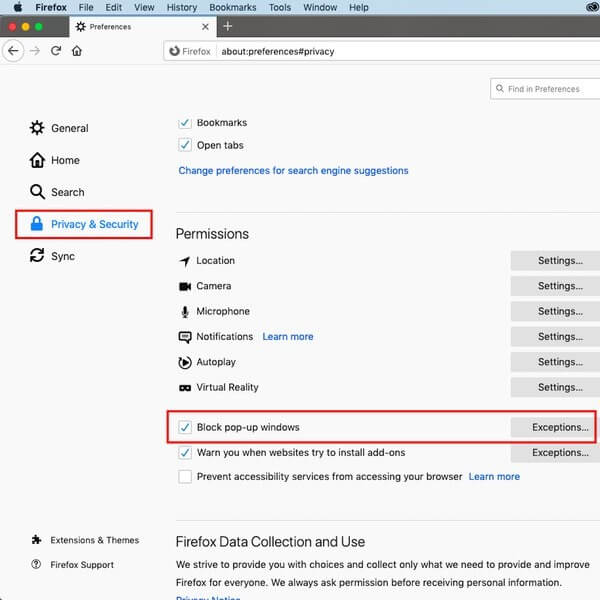

If you enter, this would allow pop-ups for, and other sites that end with. Note: Mozilla Firefox globally allows all subdomains of the exception entered. Note: Firefox Quantum's pop-up exceptions now include the protocol ( You must match the protocol being used on the website when you add the exception. Enter the website into the Address of website field.Note: If you are running a version of Firefox before Quantum, click Exceptions under Pop-ups. Click Exceptions next to Block pop-up windows under the Permissions section.Note: If you are running a version of Firefox before Quantum, click Content. Click the menu button on the upper right corner.

Repeat steps 8 and 9 for each website you need to enable pop-ups for.Enter the website into the Site field.Under Privacy and security click Content settings.Scroll to the bottom and click Advanced.In the top-right corner of Chrome, click the Chrome menu.These could include option screens such as print and download options screens, or they could stop pop-ups which would confirm downloads or show a result to a page. However, depending upon the particular pop-up blocker, they may block useful information as well. Generally, pop-up blockers are installed in order to try to avoid pop-up ads from webpages.

This may consist of multiple internet windows, or actual pop-ups caused by coding on a webpage. (The Pop-Up Blocker is enabled, which stops pop-ups from appearing.A pop-up blocker is any program that prohibits a pop-up at some point in time. Note #2: In the Microsoft Windows 10 Release 1511 Administrative Templates, this setting was named Turn off Pop-up Blocker, but it was renamed starting with the Windows 10 Release 1607 & Server 2016 Administrative Templates. It is provided by the Group Policy template MicrosoftEdge.admx/adml that is included with the Microsoft Windows 10 Release 1511 Administrative Templates (or newer). Solution To establish the recommended configuration via GP, set the following UI path to Enabled: Computer Configuration\Policies\Administrative Templates\Windows Components\Microsoft Edge\Configure Pop-up Blocker Note: This Group Policy path may not exist by default. Impact: None - this is the default behavior. Rationale: The Pop-up Blocker serves an important purpose by blocking malicious popups and helping prevent the machine from being compromised. The recommended state for this setting is: Enabled. Information This setting lets you decide whether to turn on Pop-up Blocker and whether to allow pop-ups to appear in secondary windows.


 0 kommentar(er)
0 kommentar(er)
